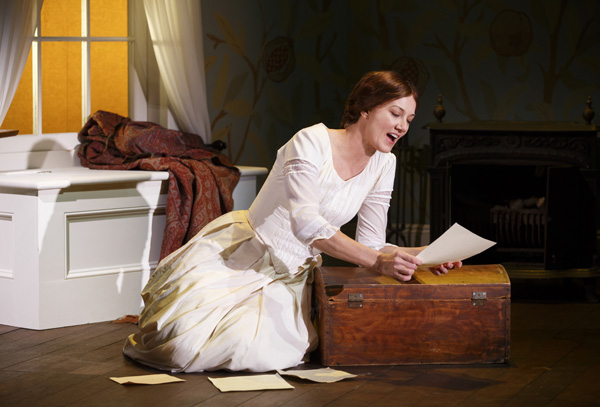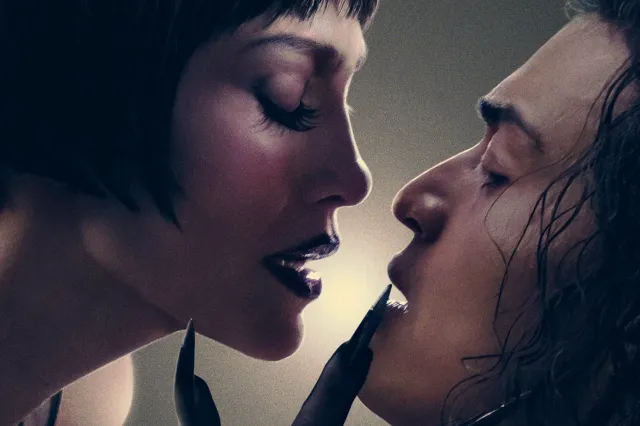The Belle of Amherst
Joely Richardson stars in the revival of this one-woman bio-play about poet Emily Dickinson.

(© Carol Rosegg)
If a lifetime of disappointment packed into a poetry-laden two hours is your idea of a great night at the theater, then the off-Broadway revival of William Luce's The Belle of Amherst at the Westside Theatre is the show for you. For everyone else, you might want to coffee up before attending a performance.
The Belle of Amherst is a curious play to revive off-Broadway. Luce originally wrote this one-woman play about 19th-century American poet and recluse Emily Dickinson as a showcase for legendary stage actress Julie Harris. After a summer of Broadway performances in 1976, Harris claimed her fifth Tony Award for the production. Since then, it has been frequently presented at regional and subscription-based theaters owing to its relatively low production costs and recognizable subject matter: Following her death in 1886, Dickinson has gone on to become one of the most popular poets in American literature. Audiences wait with bated breath for their favorite Dickinson poems in the same way they anticipate "Hey Jude" in a Beatles tribute concert.
Of course, it wasn't always so. Luce sets his play in 1883, with Dickinson living in total obscurity as an old spinster in her family home in Amherst, Massachusetts. She greets us with a blackened cake before introducing us to her secluded life of routine and letters, guiding us through her many heartbreaks and professional setbacks, while peppering her anecdotes with her own poetry.
English actress Joely Richardson (of the theatrical Redgrave clan) sensitively portrays Dickinson with a special mix of humor and grief. Her childlike delivery speaks to the arrested development that inevitably comes from never leaving the house, but her nuanced and colorful readings of Dickinson's poems make one thing abundantly clear: She's far more than a crazy old maid.
Richardson gives a quietly sad recitation of "I Was the Slightest in the House" (a poem about Dickinson's meek lifestyle) before turning to the audience and asking, "Do you read The Atlantic Monthly?" Over the course of the play, she also shares her cake recipe and talks about birdlife in her garden. This simultaneously personal, informative, and melancholic style makes Dickinson feel an awful lot like Mister Rogers for depressed and gifted children.
In fact, the austere whimsy of Antje Ellermann's set looks positively camera-ready. Simple wooden furniture is set against a backdrop of Mackintosh-style wallpaper featuring birds and climbing vines. A break in the upstage wall reveals a row of hedges in the garden beyond. David Weiner's hyperactive lighting design presents a constantly shifting plot of incandescent hues and moody shades, seemingly calibrated to catch the eye's attention.
None of this can overcome the fact that the play itself is kind of boring. The manic exposition of the first act gives way to a constant stream of depression in the second. All the while, very little actually happens: Everything is presented through Dickinson's memories. While director Steve Cosson works hard to illuminate these recollections through blocking and design, the story mostly blends together indiscernibly.
You'll have a much better time if you go into this event expecting a dramatized poetry reading, rather than a play about a poet.









